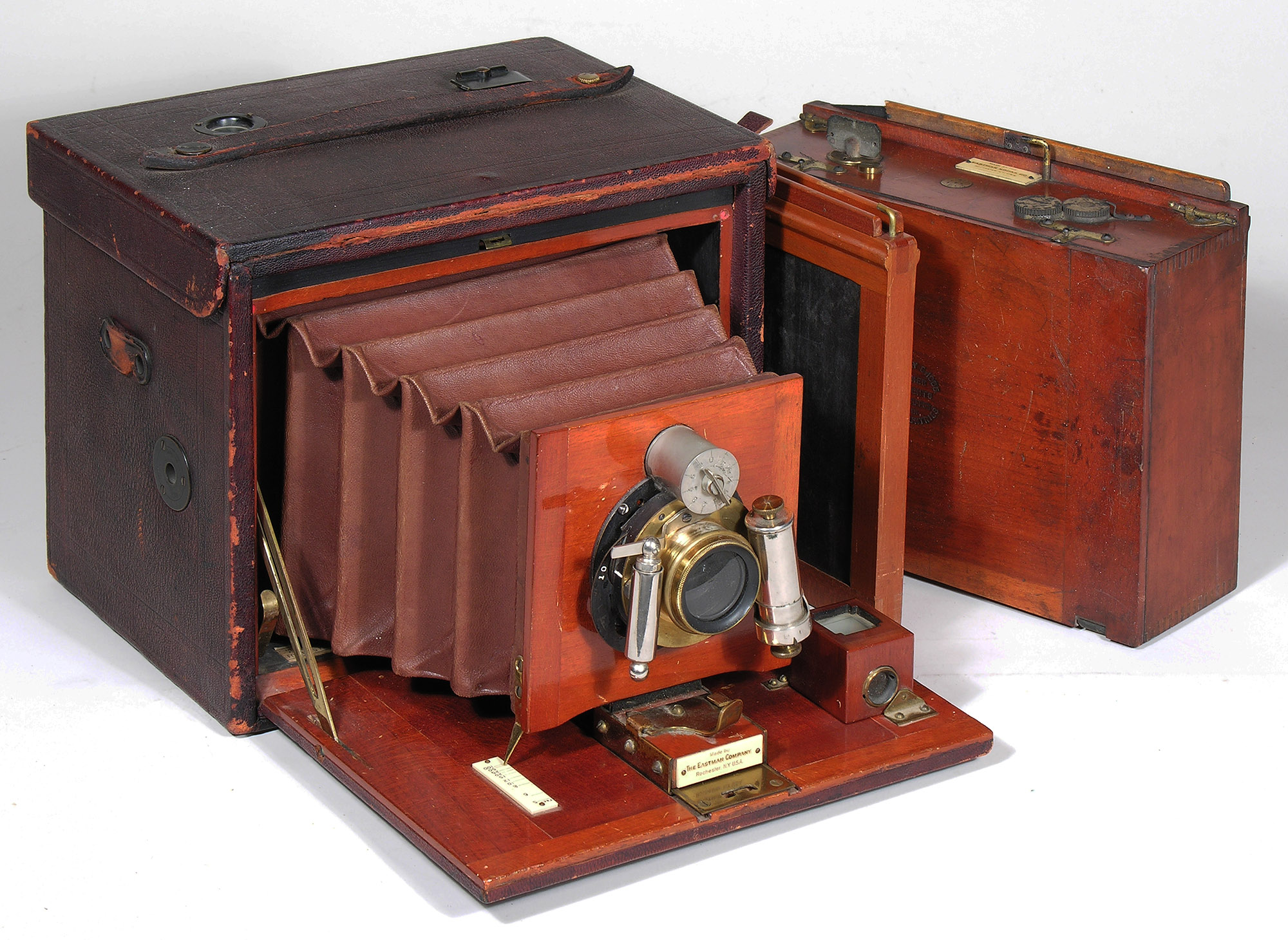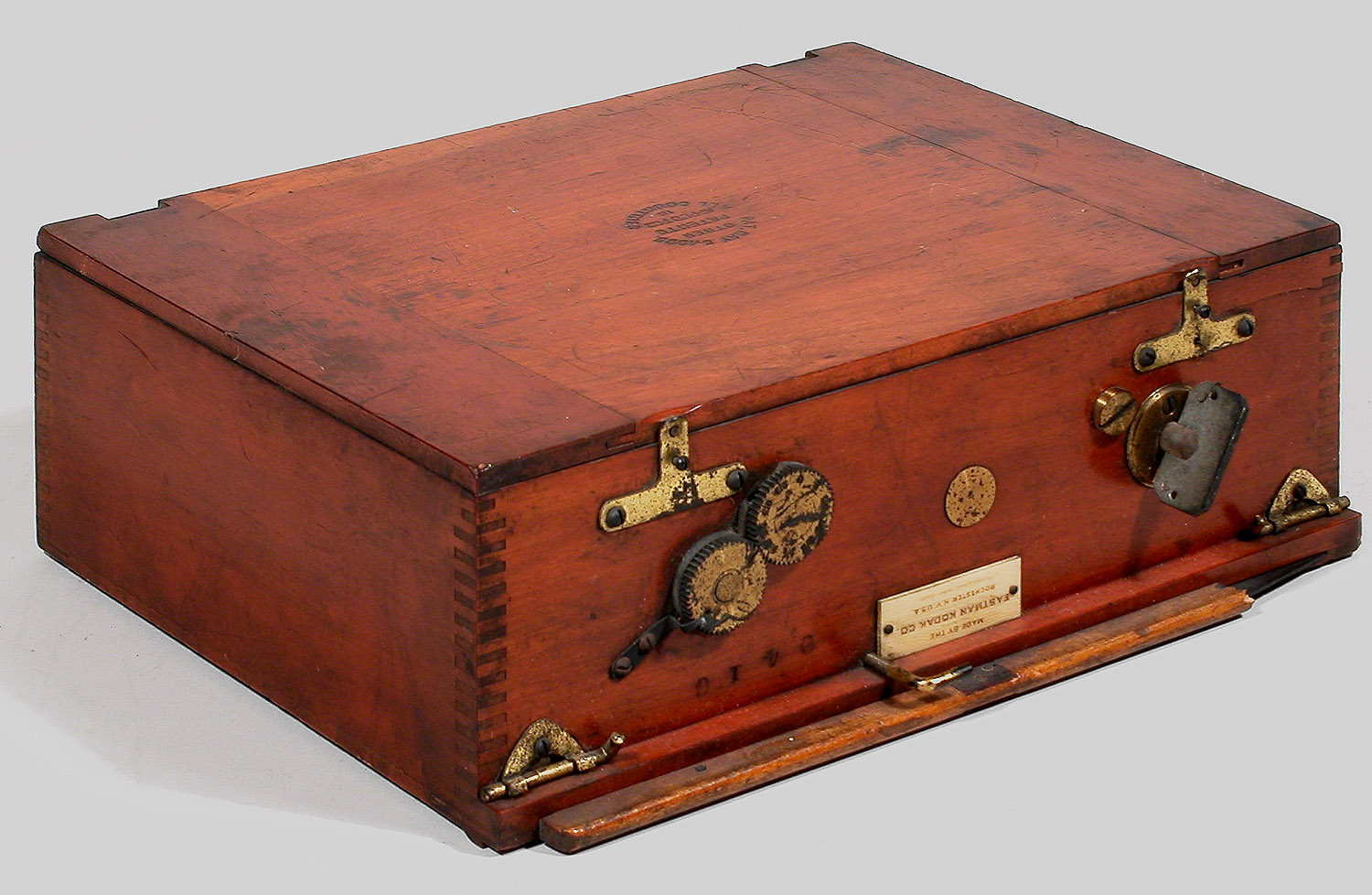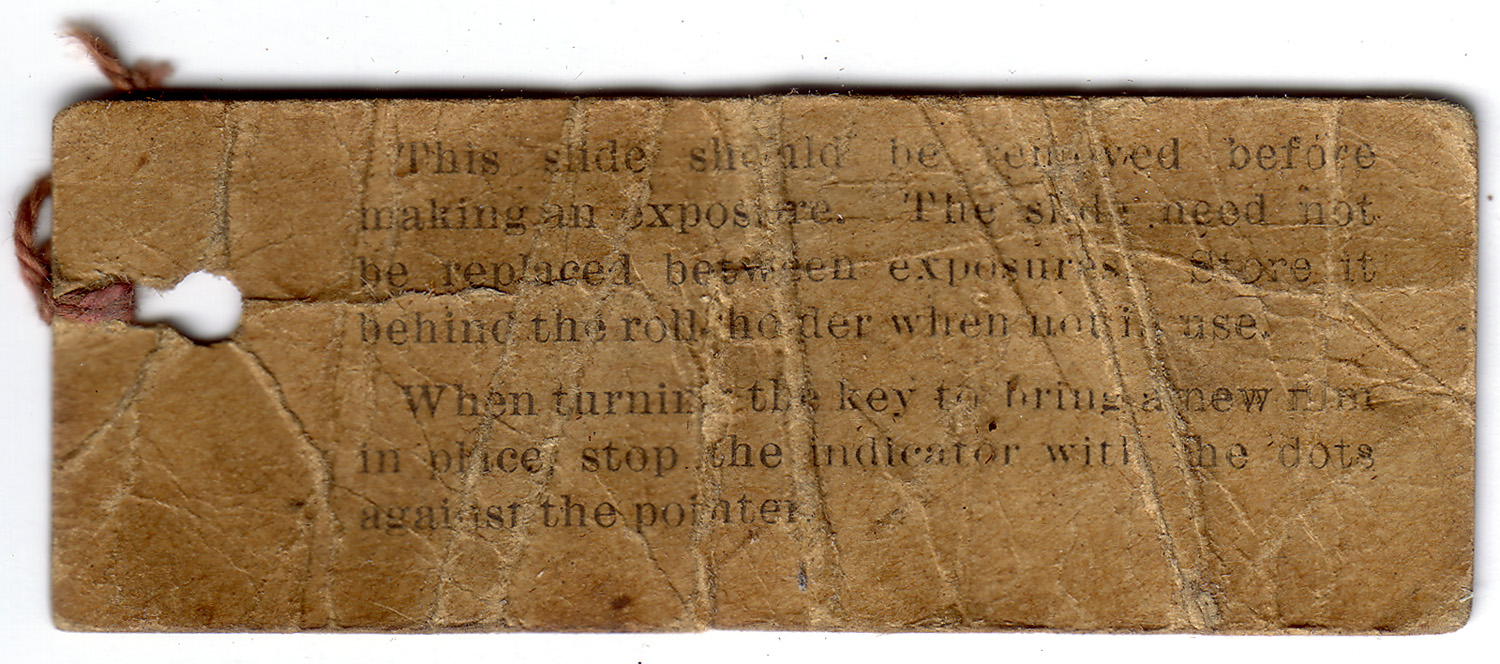The Eastman Kodak Co. (Rochester, NY)
Eastman-Walker Roll Film Holder Variation 5.5- c. 1888
5 x 7.
Roll Holder Serial No. 9410.



Notes:
William Walker was the inventor behind the early amateur camera produced by Rochester Optical Co. as the American Challenge Swivel Bed Camera. He also was the secretary of the Eastman Dry Plate & Film Co. starting in 1884. George Eastman had the machines to evenly coat glass plates and flexible film with photographic emulsion. Walker developed the above film holder to utilize flexible film in 1884, and it was marketed starting in 1885.
Until 1889, the only flexible film available was a stripping-type, i.e., a product that required a paper backing to be stripped from the film during processing to obtain a transparent negative. Despite the inconvenience, it was estimated that 35% of the negatives taken during a 1888 outing of the London Camera Club were taken using such roll film (Encyclopedia of Nineteenth Century Photography, Vol. 1, p. 1465, J. Hannavy, ed.). The reason undoubtedly had something to do with the capacity of the holders: up to 100 shots. In 1889, Eastman started selling relatively modern, non-stripping-type film.
One disadvantage was that each roll holder had to be fitted to the model and brand of camera on which it was to be used. Another was that film did not stay in the plane of sharp focus as perfectly as did a glass plate. This last apparently was the reason that cut film rather than roll film eventually supplanted glass plates in view cameras (cameras having a ground glass back for viewing). But perhaps it was that Eastman lost interest in view camera products when The Kodak was so phenomenally successful.
Eastman-Walker Roll Film Holder Variation 1.0: Distinguished from the outside by its five-piece, raised frame back, held on by four relatively large clips, two to a side, all of which engage large brads in the walls of the holder. This general construction covers both the original roll holder and the Improved Roll Holder, which was reportedly stronger yet lighter in weight, but otherwise looks nearly the same from the exterior. This variation is marked: "The Eastman Dry Plate & Film Co.", so was made 1884-1889. Examples: Serial No. 588. The really basic feature that separates Variation 1.0 from all other variations is that it made in two pieces: 1) The five-piece top has the guts of the roll holder attached to it, and 2) the bottom and sides are glued together. This arrangement requires that, in order to disassemle it, the end of the supply roller be unscrewed, and, upon reassembly, the same end must be correctly lined up with its roller and screwed back in - a magic-box-like process that is not vary apparent unless you know the secret, a fact that probably resulted in no doubt many instances of damaged holders. In later variations, the roll holder guts are attached to the sides of the box, with top and bottom being easily removed.
Eastman-Walker Roll Holder Variation 1.2: Like Variation 1.0, it has a five-piece top, although the middle piece is almost flush with the other four pieces, rather than significantly recessed, as in Variation 1.0. It is the first variation to have a three piece (top, bottom and sides with guts) construction instead of the falible two piece construction of Variatrion 1.0.
Eastman-Walker Roll Film Holder Variation 2: This is identified in the The American Annual of Photography and Photographic Times for 1888, Scovill Mfg. Co., 1888, ads p.33 as the Model of 1887. This variation has a three-piece back that is flat, held on by two large-size clips, one in the middle of each side, that extend the depth of the walls to clip into the front frame. In larger sizes (see the 6 ½x8 ½ size), two additional clips engage large brads, similar to the clips on Variation 1. .On the bottom, it has two widely separated, large, knurled, brass ends of the rollers. On the top it has a winding key, and a brass plate in the shape of an elongated question mark. This variation is marked: "The Eastman Co.", so was made 1889-1892. Examples: Serial No. 5762, No. 1516, No. 4550.
Eastman-Walker Roll Film Holder Variation 3: This is also the Model of 1887, like Variation 2, except that, instead of large, knurled roller ends, it has small nuts. This may represent the loss of the original, brass ends, but it is hard to imagine how they were lost. This variation is marked: "The Eastman Co.", so was made 1889-1892. Examples: Serial No.
Eastman-Walker Roll Film Holder Variation 3.5: This variation is labeled "Eastman Kodak Co."; it has two large gears on the winder end. Serial No. 490.
Eastman-Walker Roll Film Holder Variation 4: This variation was made mainly in 4x5" and 5x7" for the Folding (Satchel) Kodak. It retains the three-piece back, but, unlike previous variations, has no overhang. Interior parts are rearranged, visible on the outside: the two knurled brass roller ends are adjacent rather than apart, and the elongated question mark plate is gone. This variation is marked: "The Eastman Co.", so was made 1889-1892. Examples: Serial No. 134.
Eastman-Walker Roll Film Holder Variation 5: This variation is like Variation 4, except that two brass gears appear to measure the exposures or length of film exposed. Only the top removes, the bottom (slide containing portion) does not disassemble. This is the first variation to bear the maker: "The Eastman Kodak Co.", so was made after 1892. All variations after this are so marked. Examples: Serial No. 7143, No. 7038.
Eastman-Walker Roll Film Holder Variation 5.5: This variation is the same as Variation 5, except that the bottom does disassemble. Apparently that feature of Variation 5 was not a good one. Examples: Serial No. 9410
Eastman-Walker Roll Film Holder Variation 6: This variation returns to the overhanging top, and the brass gears are in slightly different arrangement than on Variation 5.5. Examples: Serial No. 427.
Eastman-Walker Roll Film Holder Variation 6.9: This variation dispenses with the overhang, and the top is secured at the corners. This example has the rollers positioned the long way in the box. Its brass gears for exposure counting have a a brass cover. It has springs to hold it in place. Examples: Serial No. 454, No. 929.
Eastman-Walker Roll Film Holder Variation 7: This variation is the same as Variation 6.9, except that it is held in place by clip hardware. Examples: Serial No. 3340.
Eastman Cartridge Roll Film Holder (Roll Holder Variation 8): This variation marks many changes: 1) the winder has a catch built into a slotted piece of brass, 2) the "Kodak" identification is on a celluloid disk that is inlet into the wood, 3) the roller ends are brass squares instead of bare knurled circles, and 4) this is the introduction of the large slot in the top that allows the back of the film to be seen. Prior to this era, the film was not encased in a light-proof cartridge, and had to be loaded in the dark. Examples: Serial No. 4284, No. 2008.
Eastman Daylight Roll Film Holder (Roll Holder Variation 9): This variation has the same approximate configuration as Variation 8, except its roller ends are internal, and its outside is covered in leather with Ni-plated brass trim. Examples: Serial No. 593.
The tag shown above was found with a case of 4x5" plate holders that was probably intended for a Folding Kodak. From the content, it is apparent that it should have been found on a roll film holder, such as Variation 4, so it is included here. It reads: "This slide should be removed before making an exposure. The slide need not be replaced between exposures. Store it behind the roll holder when not in use. When turning the key to bring a new film in place, stop the indicator with the dots against the pointer."
References:
